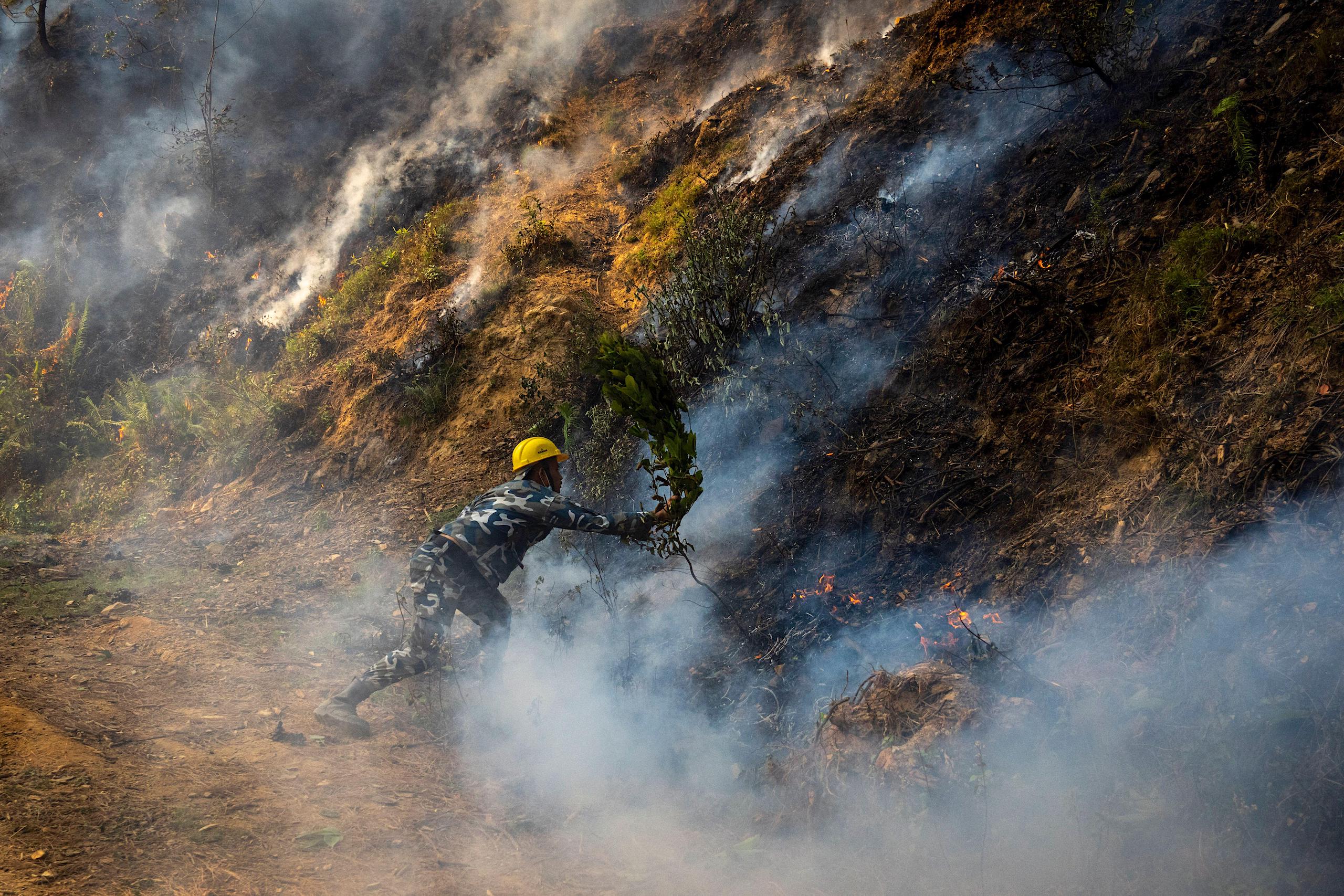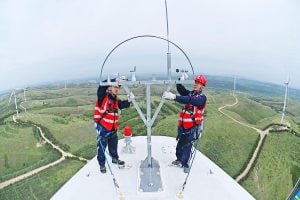As global temperatures rise, Nepal is increasingly vulnerable to climate-related disasters. Events like this month’s Glacier Lake Outburst Flood in the Everest region, the early 2024 widespread forest fires, the 2023 Kagbeni flood and the 2021 Melamchi flood starkly highlight the growing frequency and intensity of these disasters. Beyond these dramatic events, slower-onset climatic changes are steadily pushing communities toward poverty and displacement.
As one of the world’s most climate-vulnerable countries, Nepal must take substantive steps to protect its people and economy. Achieving the country’s climate goals requires significant financial resources, robust policies and institutional frameworks. Implementing the plan to achieve its Nationally Determined Contribution (NDC) “from 2021 to 2030 [will cost] USD 33.04 billion”, and implementing its National Adaptation Plan (NAP) until 2050 requires USD 47.4 billion, of which Nepal can only “contribute USD 1.5 billion,” less than the cost of implementing the NAP per year. To achieve net-zero by 2045 will cost USD 196 billion. Given the scale of the challenge, public finance alone will not suffice. While increasing its public spending on climate actions, Nepal must tap into international finance and accelerate private investments.
Increase public spending on climate action
Although Nepal has begun integrating climate finance into its fiscal policies and budget planning, these efforts are insufficient. The government has introduced climate budget tagging to track public funds allocated to climate-related activities. However, without a comprehensive strategy for reviewing and reallocating the budget to support climate outcomes, these tools have limited impact, as noted in a report assessing global climate action by the Coalition of Finance Ministers for Climate Action. Moreover, Nepal’s current approach does not account for climate budget and expenditure at the local level, nor does it tag spending on activities with negative climate impacts. The gaps in tracking international finance flows and private investments in climate-related activities hinder transparency, accountability and alignment with the country’s climate goals.
To address these issues, the government must mainstream climate change into its public financial management system at all levels. This includes introducing ‘environmental and climate criteria’ as evaluation metrics for public investment programmes and mandating climate-risk assessments throughout the project cycle. Such measures would ensure that public spending is consistent with the country’s climate goals and that projects with high environmental impacts are excluded from the public investment programme.
Globally, finance ministries are increasingly driving climate actions. In Nepal, the Ministry of Finance (MoF) has authority over public spending and can better coordinate line ministries to integrate climate considerations into sectoral policies and plans. The MoF also has more capacity to generate and mobilise international finance for climate actions than the Ministry of Forest and Environment.
Mobilise private investments and access international finance
While the MoF handles public finance, the Central Bank of Nepal (Nepal Rastra Bank) plays a vital role in mobilising private investments from banks and financial institutions (BFIs) for climate actions. Other financial regulatory bodies, like the Nepal Insurance Authority and the Securities Board of Nepal (SEBON), can also mobilise private sector investments in climate risk reduction.
The Central Bank has issued Environmental & Social Risk Management (ESRM) guidelines for BFIs, integrating environmental and social risks into their financial risk management systems. It has also drafted a green finance taxonomy to guide the financial sector in financing green and climate projects, reducing the risk of greenwashing. However, the Central Bank must further internalise climate financing within its policies and establish a framework to make financial institutions more resilient to climate risks.
Through directives and monetary policies, the Central Bank can mandate BFIs to allocate a certain percentage of their investment portfolios to green finance, offer lower interest rates for green loans and disclose their annual sustainability performance. Some promising steps have already been taken, such as limiting banks to 50% financing for fossil-fuel vehicles while leveraging up to 80% financing for electric vehicles and requiring at least 10% of investments to the energy sector.
Lessons from Mongolia
Nepal can draw valuable lessons from Mongolia, which has taken proactive steps to mobilise green finance. Mongolia has pledged to allocate 1% of its GDP to tackle climate change. In 2022, Mongolia adopted a sustainable finance roadmap with the goal of increasing green financing to 10% in the banking sector and 5% in the non-banking financial sector by 2030. Although these targets are voluntary, all banks are required to submit annual sustainability reports, a practice now being extended to other non-banking sectors and companies.
Mongolia’s financial sector has demonstrated a proactive approach to developing climate projects, resulting in increased access to international climate finance. Mongolia has already accessed USD 468 million from the Green Climate Fund, whereas Nepal has so far only accessed USD 112 million. Last year, Mongolia issued its first-ever green bond, raising USD 60 million. In contrast, Nepal has struggled to develop green bankable projects and lacks the institutional capacity to absorb available international finance. This is one reason Nepal lags behind in accessing and mobilising international climate finance and investments.
Development partners and the Government of Nepal have committed to transitioning towards green, resilient and inclusive development (GRID), with an indicative USD 7.4 billion of ongoing and future support. However, clear classification of GRID projects is needed to avoid greenwashing, as the government often floats projects misaligned with the country’s climate goals and there is a risk that conventional development projects could be misrepresented as climate initiatives. For instance, financing a multi-lane highway should not be considered as green, resilient development.
With limited resources, Nepal must make smart choices in selecting development projects that are cost-effective, sustainable and offer broad socio-economic benefits. Investing in cost-effective electric public transportation and railways to enhance sustainable mobility is preferable to spending on multi-lane highways.
Moving forward, immediate action is crucial
International finance is crucial to implement Nepal’s climate plans. Nepal expects more than 92% of the cost from external sources to meet its climate targets. However, the commitment of developed countries to contribute USD 100 billion per year by 2020 to help vulnerable and poor countries fight climate change was not realised until 2022. The external climate financing needed by developing countries (excluding China) is far more, approximately USD 1 trillion a year by 2030. In addition, in the current international climate finance regime, more finance comes as a loan or investment than grants. In 2022, about 69% of public climate finance were loans. This is not fair for developing countries like Nepal which spends significant amount of budget to debt servicing, while dealing with the climate impacts.
Nepal cannot afford to wait for international support to materialise. Generating and mobilising climate finance domestically requires a mix of financial policy instruments and measures. One potential approach is introducing a carbon tax, building on existing green taxes, to help transition toward a low-carbon economy and generate funds for climate actions. However, carbon taxes alone cannot form a permanent revenue source, as they will gradually decline as the country transitions. This underscores the need to diversify the economy and identify new revenue streams to reduce dependence on fossil fuels.
Along with fiscal programmes and financial incentives, regulatory measures are essential if Nepal is to achieve its climate targets. For example, the government could move from offering tax rebates for private electric vehicles to prohibiting the registration of new fossil fuel vehicles entirely.
Ensuring a successful transition and financing climate resilience are primarily government responsibilities and should not be left to the free market. Public infrastructure and services such as healthcare, public transportation and walkable or cyclable cities, where the private sector has little incentive to invest, require government investment.
As climate risks continue to threaten lives, livelihoods and the economy, Nepal does not have the luxury to wait for international climate finance to trickle in.
In the meantime, Nepal must increasingly mobilise its public finance and accelerate private investments towards a climate-resilient and low-carbon economy. Delaying action now will only result in higher costs later. Most importantly, all financial investments should be sustainable and climate-friendly.









